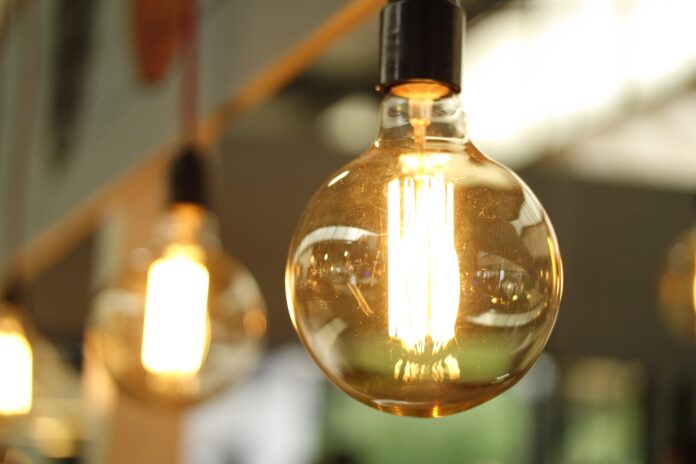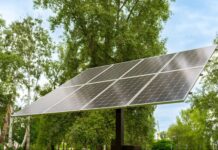
Certainly, winters in Texas aren’t going to be quite as impactful as those in a place like Alaska or Wyoming. That doesn’t mean they’re not cold, and it doesn’t mean you won’t have to use some sort of heating to keep things warm.
Some homes use fireplaces, some use gas heating, most use electric. Regardless of which you use, there will be some level of utility involved. On the other side of that coin as well are the summers. Now even if you don’t use any electricity for heating in winter, you’re almost assuredly going to need some AC in summer. This gets pricey quick.
If you’re going to maximize your resources throughout the year, you need to put some serious thought into how your utilities are set up. There are a few different approaches you can take, in this writing we’re briefly going to go over some of the most popular.
Building Your Own Property To Anticipate Heating And Cooling

Are you familiar with the “Earthship” movement? You don’t have to go by this method entirely to achieve energy-efficient housing, but you can save a lot of trouble this way. Effectively, the “Earthship” building incorporates used or reusable materials to construct homes that are self-perpetuating. We’re talking: water, gardens, heating, AC—all automatic, and sustainable.
So here’s what one may look like: you’ve got a south-facing greenhouse with a “slope” on the glass at the latitude of your location. You get a garden full of vegetables started there, and separate it off from the rest of the house. You use metallic grating on the roof to send water into tanks where it’s filtered and collected—anywhere averaging 12 inches of rainfall a year should provide you with enough; you’ve just got to collect it properly.
That water is used four times before it becomes toilet water: drinking and shower water drains to gray water supplies that go through the garden and are pumped into the toilet after they’ve filtered through. The toilet then sends the dirty water to exterior plant growth. The house waters itself simply by someone living there.
Electricity is managed through solar panels. You can buy a total solar array for about $5k if you do the installation work yourself. Another $5k gets you a wind turbine. Voila, you have a complete property with no energy costs outside your own maintenance and initial investment. Now all you have to pay annually is property tax.
Augmenting Existing Property The Most Cost-Effectively

Another Texas utility option involves simply augmenting existing technology. You can install a rain collection system, garden, and electricity option into a property designed for traditional grid use. Now, this will depend at least partially on the zoning in your area, but if you do it right and follow the law, you can see property value increase ahead of “green” installation costs.
For example, you can expect a solar array that provides 3.1 kWh (kilo-Watt hours) of electricity to increase property value between $10k and $19k, or maybe even higher; depending on the area of Texas where you are. If you install it yourself, you’ll double your money at a minimum. Whether or not you go the DIY route, you’ll still halve your utility bills every month, and then you save more as time goes by. There also may be tax breaks.
The same is true of a wind turbine and rain collection, though be careful—there are communities where it’s not legal, for whatever reason, to collect your own rainwater. Texas should have some freedom here but do your homework first to know what you’re dealing with. At any rate, if you’re clever about it, you can offset utility bills this way.
Augmenting a property toward grid-independence is something that, even if you don’t use that independence, can be something that makes your property very desirable to potential buyers. This alone represents a reason behind making such changes. Do your homework and see what’s trending in the community you’re in, or you’re considering moving to.
Maximizing Available Grid Options

What will describe the majority of most homeowners in this regard will be utilizing available grid solutions. Did you know what you pay initially isn’t always what you absolutely have to pay? In any given area of Texas, there are usually multiple electricity providers that offer energy at different rates. Websites like TexasElectricityPlans can provide a considerable spread of options.
Expect the range of electricity rates to be from around 4 to 13 cents per kWh. Why is there such a spread? Well, that depends on the way in which electricity is generated. Traditional techniques like coal, oil, or gas tend to be more cost-effective, as the infrastructure is more cost-effectively established. Accordingly, expect the low-end of costs to be here.
Meanwhile, new, “sustainable” energy options are developing all the time, allowing homeowners the opportunity to do something proactive for the environment while they energize their premises. Solar energy options will come from large panel farms, and will accordingly be slightly more expensive. Still, you can do good by your own personal ethic.
The key here is knowing what’s available, what it’s going to cost you, and what sort of budgetary constraints you’ve got to work with. When you have that information it becomes a lot easier to make the choice which best matches your particular situation. Just remember there’s more than one option out there, and you don’t have to stay with a single option only.
Know Your Options

Texas is a state that is full of economic opportunity. Especially in the wake of current economic woes on the American West Coast, many families are swiftly moving there owing to the associated potential.
If you’ve got a budget to work with, you’ve got your choice of totally building your own property, augmenting it, or simply going with what’s readily available. What makes the most sense here is doing a little research into the area you plan to move, and considering how much time is available.
















